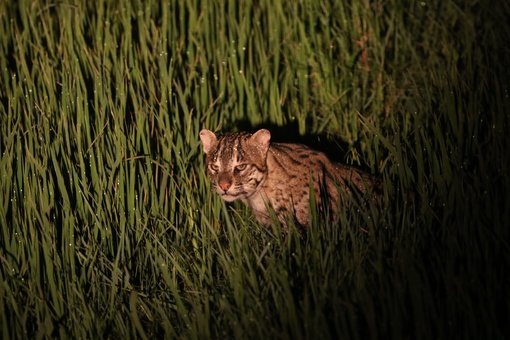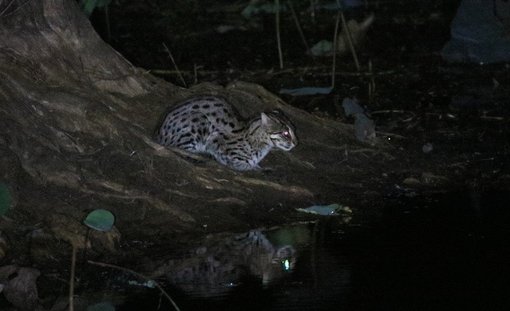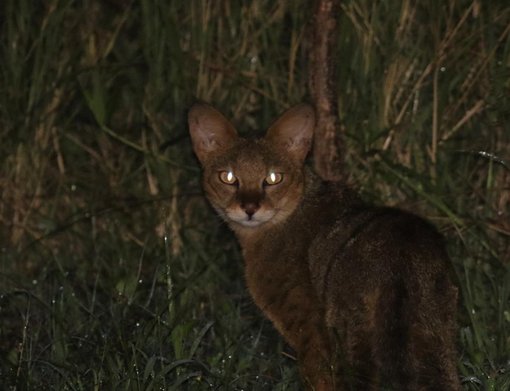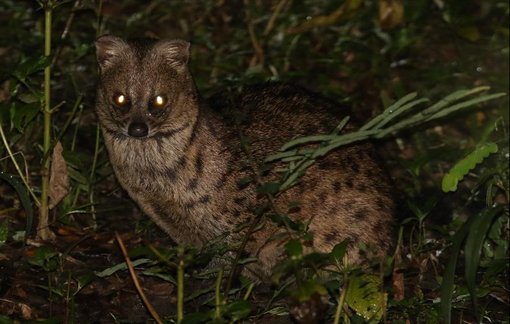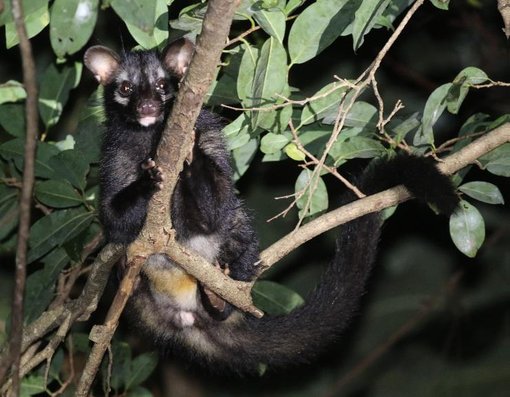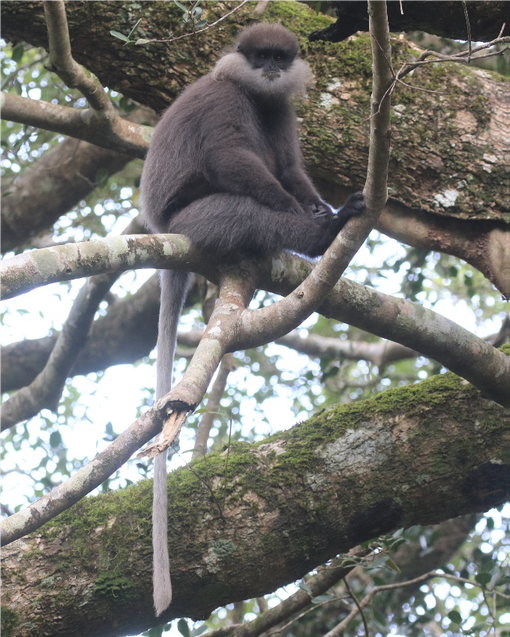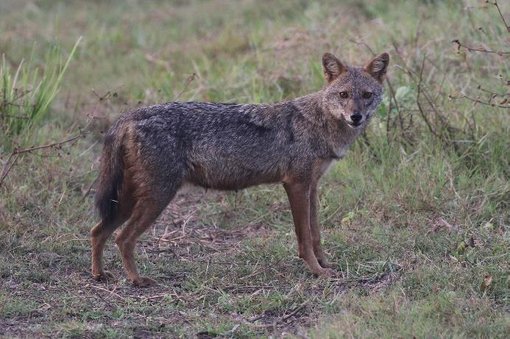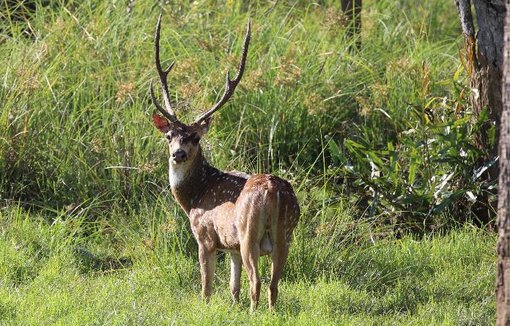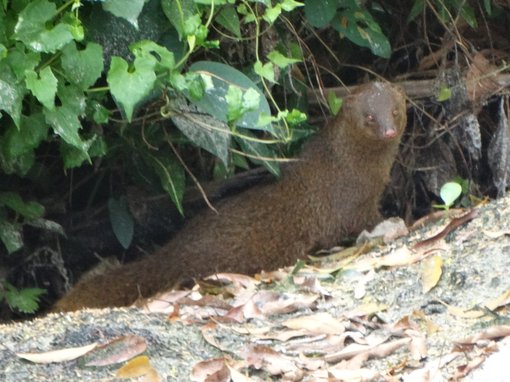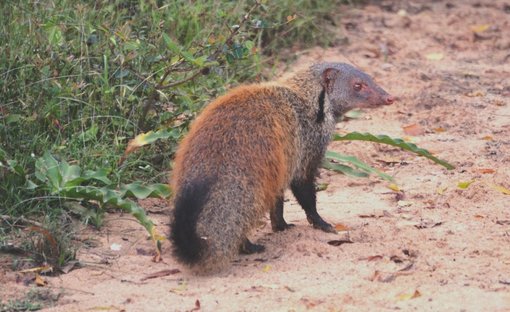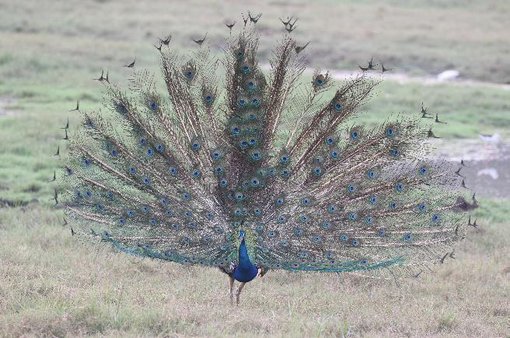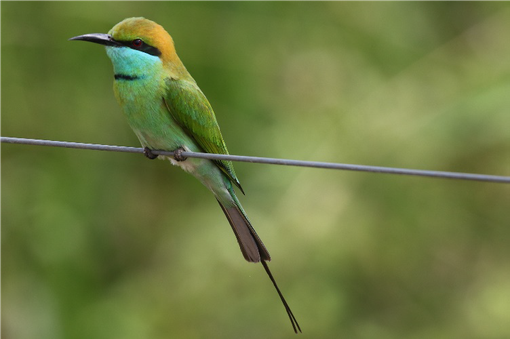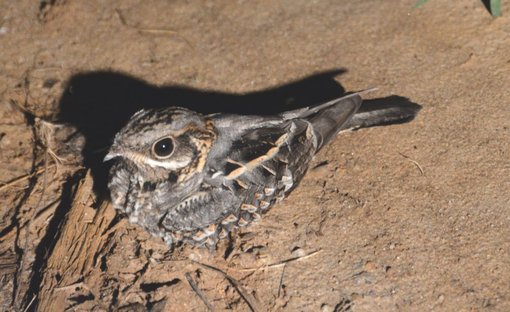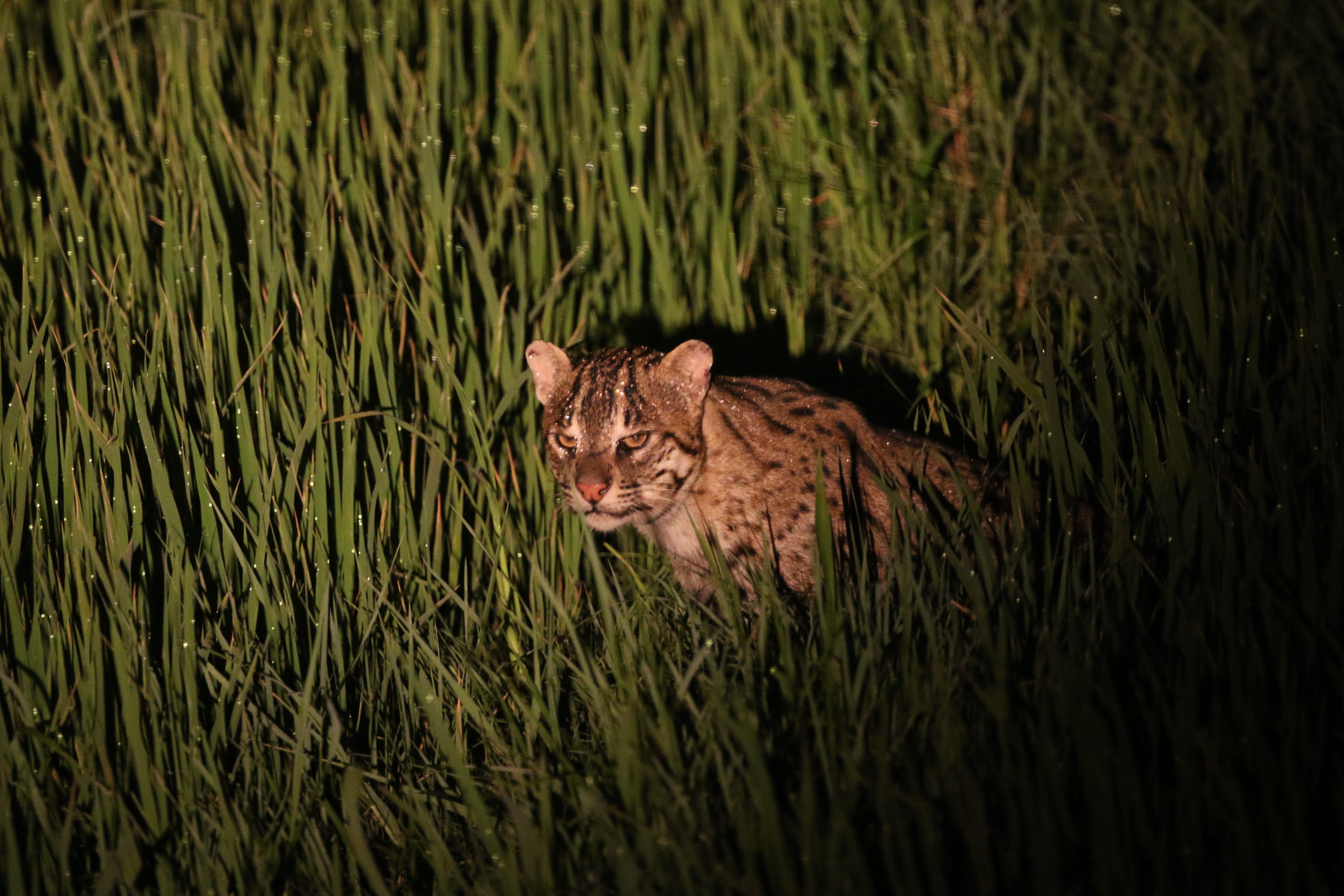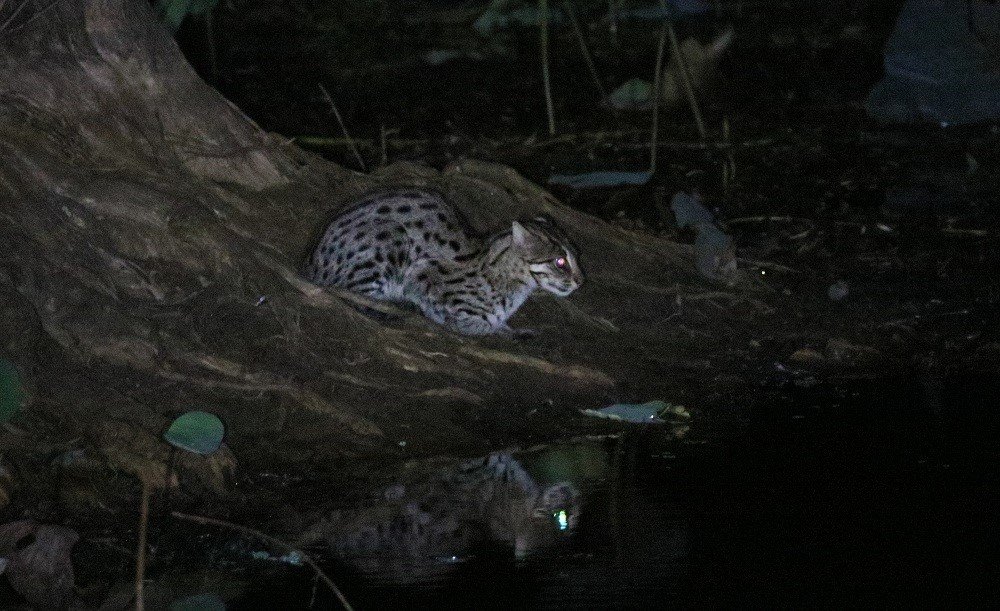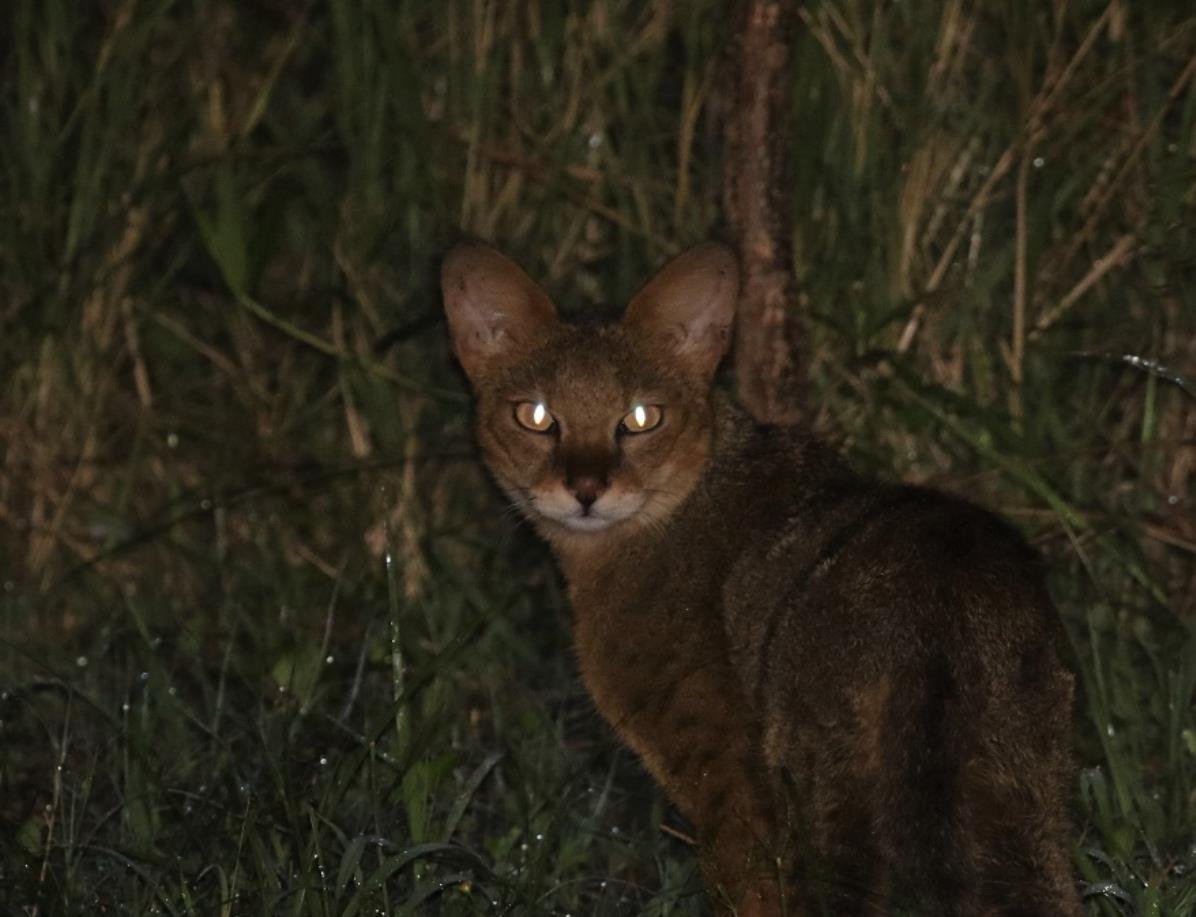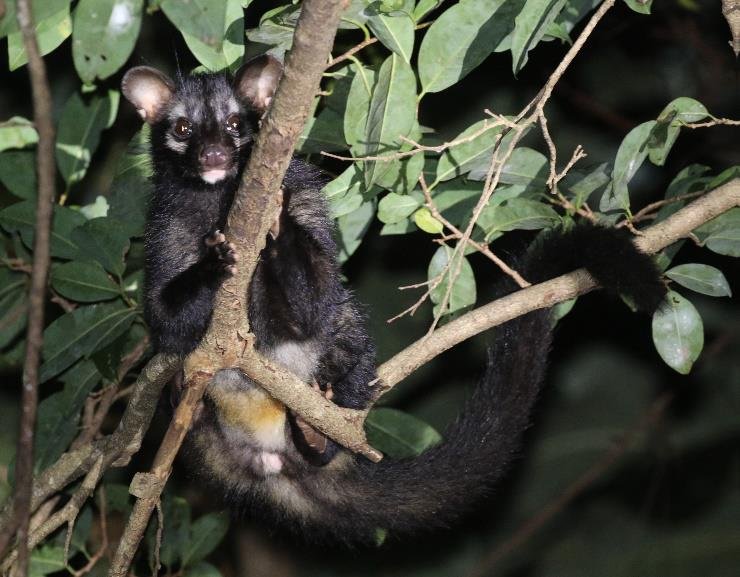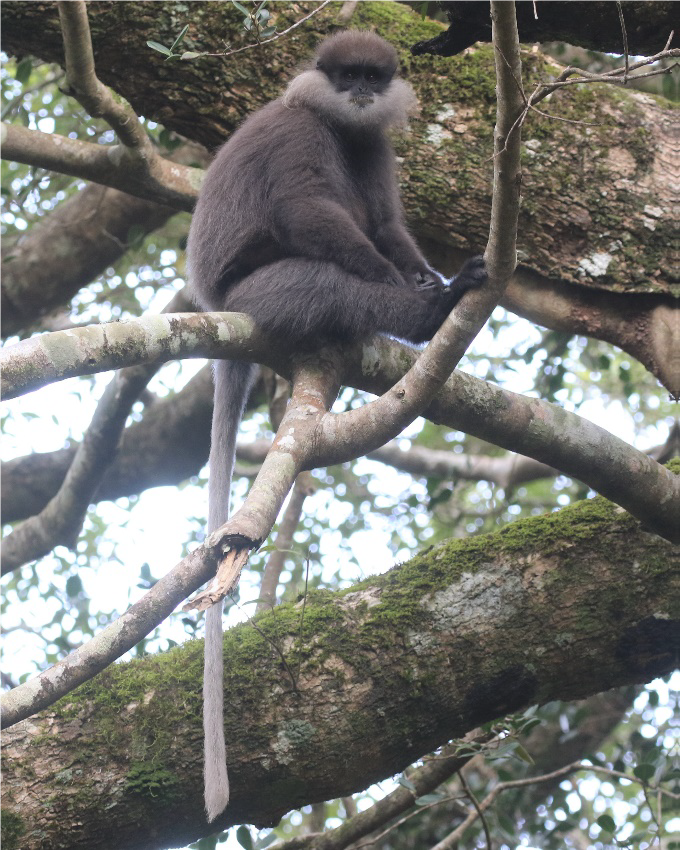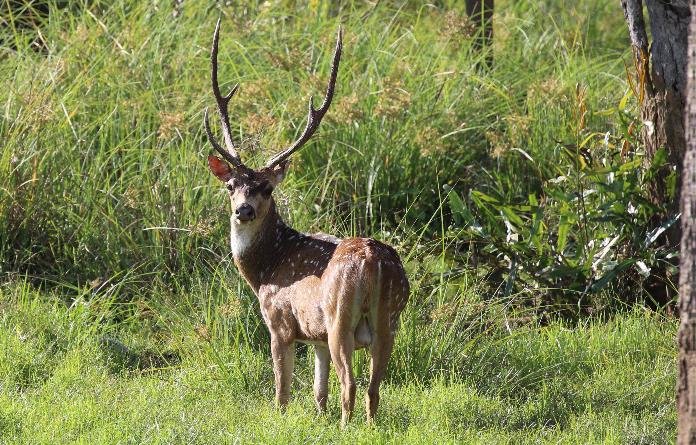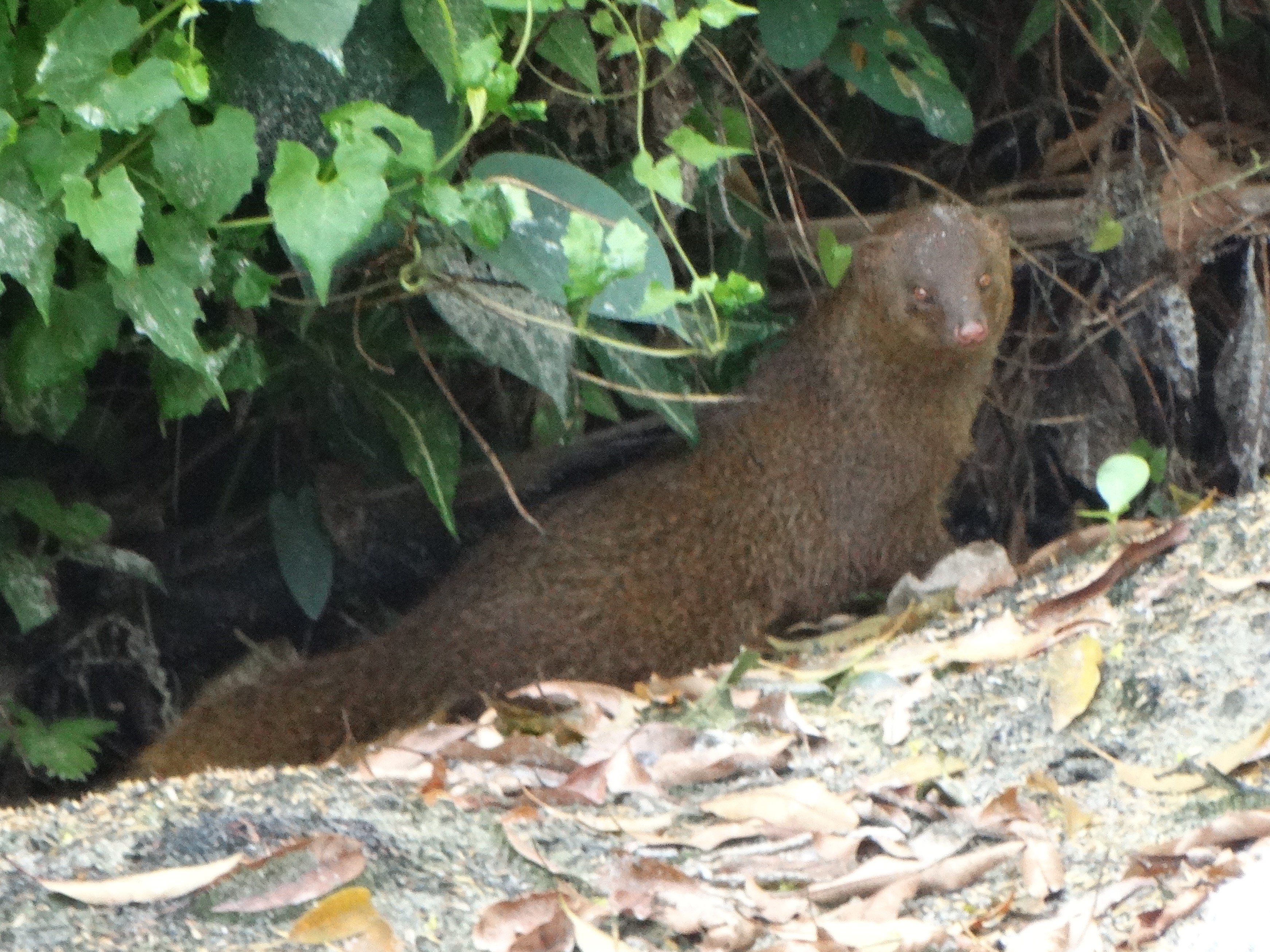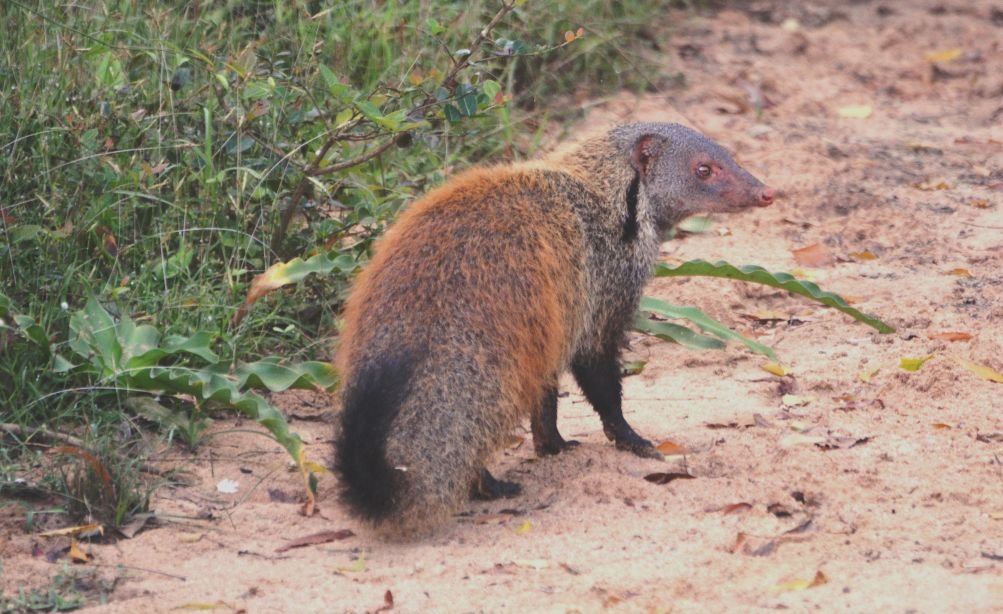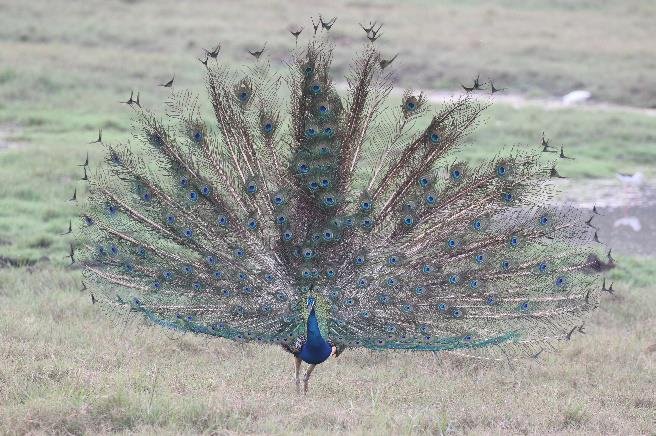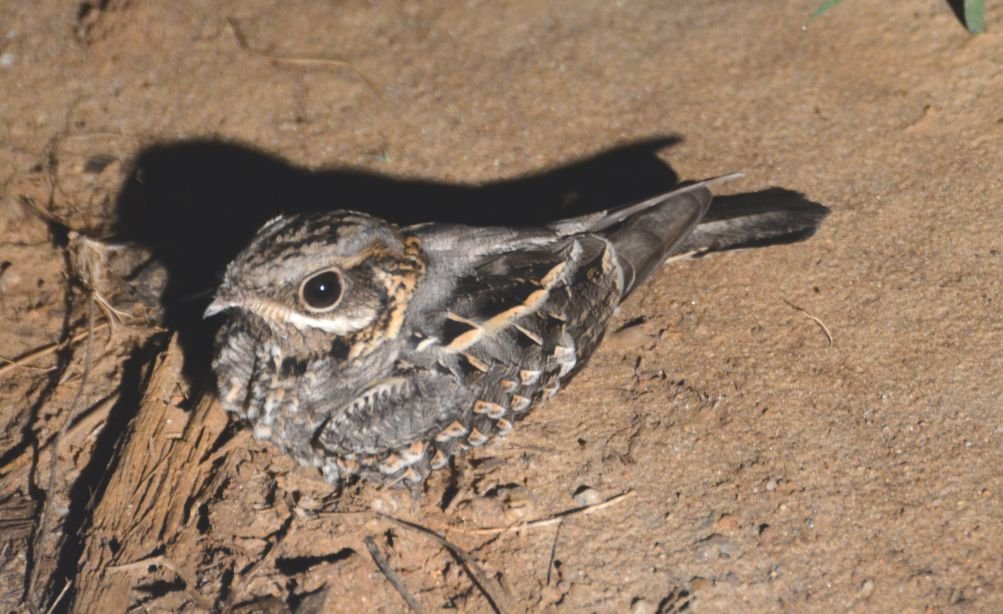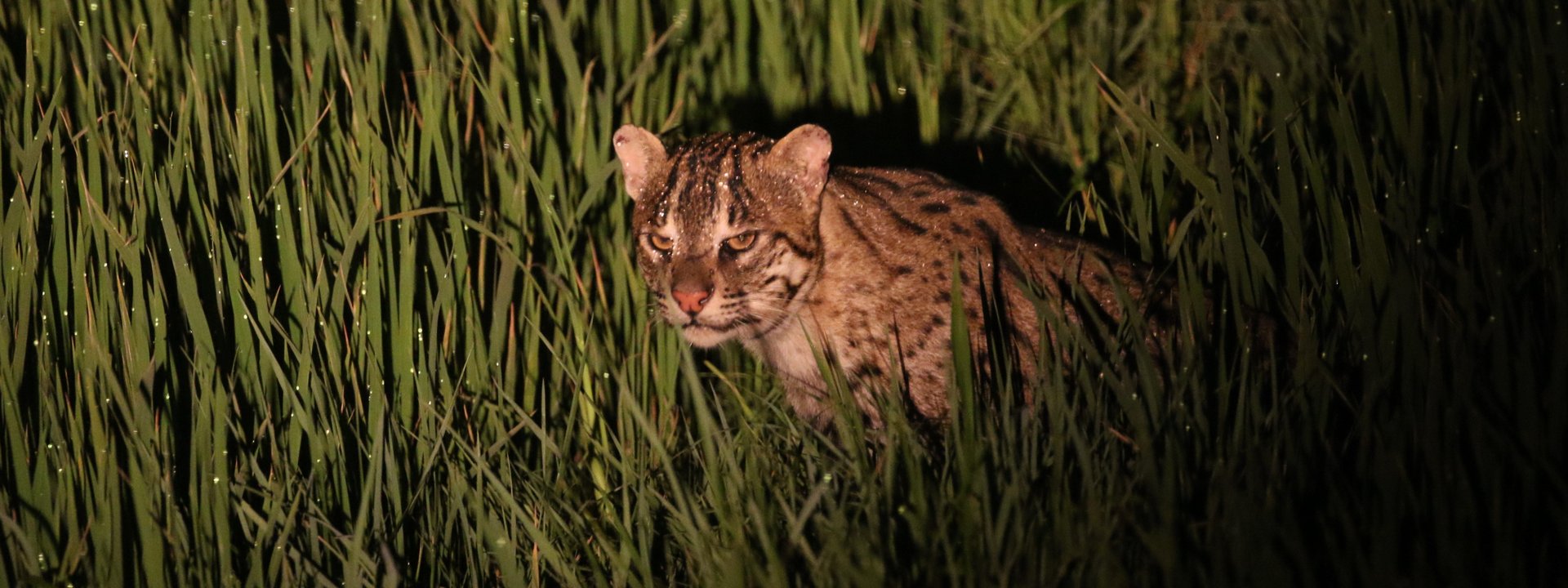Sri Lanka
Speciality mammals and endemic birds
In search of the special mammals and birds of this picturesque Indian Ocean island
After highly successful tours to Sri Lanka in 2019 and 2023, we plan to return to this delightful Indian Ocean island in 2024 to look for all four Sri Lankan cats, along with a range of other exciting mammals.
The main focus will be cats and endemic mammals and we intend to offer several long spotlighting drives to look for species such as Fishing and Rusty-spotted Cats, Golden Palm Civet and Grey and Red Slender Loris. We also expect to find many commoner mammals including good numbers of Asian Elephants.
Although primarily a mammal tour, we will also try to see a number of Sri Lanka’s endemic birds and for anyone who wishes, we can arrange an extension to Sinharaja Rainforest to look for more of Sri Lanka’s endemic birds including the famous Serendib Scops Owl.
There is also an optional extension (at the end of the holiday) to Kalpitiya from where there will be two boat trips to look for cetaceans with the possibilities including Blue Whale, Sperm Whale, Spinner Dolphin, Orca and Short-finned Pilot Whale.
Tour Dates & Prices
Tour Highlights
- A small group mammal-focussed trip to Sri Lanka
- Enjoy several extended night drives as well as exploring during the day
- Look for the island's four species of cats - Fishing Cat, Rusty-spotted Cat, Jungle Cat and Leopard
- Other mammal possibilities include Asian Elephant, Purple-faced Langur, Sri Lankan Palm Squirrel, Golden Civet, Golden Jackal and Sloth Bear
- See a range of Sri Lanka's endemic birds with the possibilities including Sri Lanka Junglefowl, Sri Lanka Wood Pigeon, Sri Lanka Hanging Parrot, Sri Lanka Grey Hornbill, Red-backed Flameback and Sri Lanka Woodshrike
- Chances for other great birds including Indian Peafowl, Great Stone-curlew, Brown Wood Owl, Chestnut-headed Bee-eater, Stork-billed Kingfisher, Indian Pitta, Crimson-fronted Barbet and Purple-rumped Sunbird
- Explore a selection of Sri Lanka's national park including Lunugamvehera, Horton Plains and Wilpattu
- Optional extension to look for cetaceans with the possibilities including Blue, Sperm and Minke Whales
- Led by WildWings guide Mukesh Hirdaramani and accompanied by Ewan Davies subject to minimum numbers
Outline Itinerary
Depart UK on an overnight flight for Colombo, Sri Lanka.
Early morning arrival Colombo. Transfer to Kanneliya. Late afternoon and evening spotlighting walks at Kanneliya
Morning Kanneliya Rainforest. Drive to Kataragama. Evening spotlighting along the Kataragama to Buttala road.
Morning drive in Lunugamvehera National Park. Afternoon relaxing around hotel. Spotlighting session along Kataragama to Buttala road or Kataragama to Bundala road.
Morning relaxing around hotel. Afternoon drive in Lunugamvehera National Park. Spotlighting session along Kataragama to Buttala road or Kataragama to Bundala road.
Morning drive in Lunugamvehera National Park. Late morning/afternoon transfer to Nuwara Eliya.
Morning visit to Hakgala Botanical Gardens. Afternoon drive to Kandy. Evening spotlighting in grounds of hotel.
Morning drive to Sigiriya. Afternoon birding at Sigiriya. Long spotlighting session around Sigiriya.
Morning lie in. Afternoon jeep safari in Minneriya or Kaudulla National Park depending on the location of the Elephants. Long spotlighting session around Sigiriya.
Morning lie in. Afternoon walk in Pidurangala forest /rock temple in looking for bats, Purple-faced Leaf Monkeys, mongooses and squirrels. Long spotlighting session around Sigiriya.
Day at Wilpattu National Park. Evening spotlighting in buffer zone outside national park
Morning jeep safari in Wilpattu National Park, afternoon at leisure around hotel. Evening spotlighting in buffer zone outside national park.
Morning jeep safari in Wilpattu National Park. Afternoon drive to Katunayake.
Morning flight back to the UK arriving back early evening.
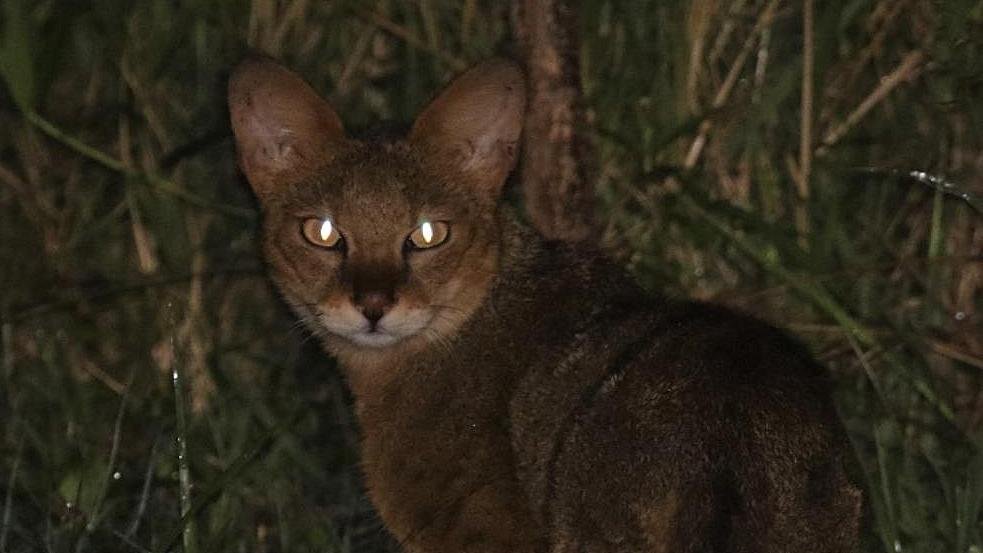
After highly successful tours to Sri Lanka in 2019 and 2023, we plan to return to this delightful Indian Ocean island in 2024 to look for all four Sri Lankan cats, along with a range of other exciting mammals. We have made a few changes to the itinerary to maximise on our chances of encounters with Rusty-spotted Cat, Fishing Cat and Leopard.
The focus remains Sri Lanka’s exciting cats and endemic mammals and we will have several long spotlighting drives to maximise our chances of finding species such as Fishing and Rusty-spotted Cats, Golden Palm Civet and Grey and Red Slender Loris. We also expect to find many commoner mammals including good numbers of Asian Elephants.
Although this is primarily a mammal tour, we will also try to see a number of Sri Lanka’s endemic birds.
The tour intends to visit a number of localities including Kanneliya Rainforest, Lunugamvehera National Park, Kataragama, Hakgala Botanical Gardens, Horton Plains National Park, Kandy, Sigiriya, Minneriya or Kaudulla National Parks, Wilpattu National Park and Anawilunawa RAMSAR Sanctuary.
There is also an optional extension (at the end of the holiday) to Kalpitiya from where there will be two boat trips to look for cetaceans with the possibilities including Blue Whale, Sperm Whale, Spinner Dolphin, Orca and Short-finned Pilot Whale. Please contact the office for further details.
Potential Mammals (selected species only)
Asian Elephant, Grey Slender Loris, Red Slender Loris, Toque Macaque, Tufted Grey Langur, Purple-faced Langur, Indian Hare, Indian Gerbil, Lesser Bandicoot Rat, Indian Crested Porcupine, Sri Lanka Giant Squirrel, Sri Lankan Palm Squirrel, Layard’s Striped Squirrel, Indian Flying Fox, Schneider's Leaf-nosed Bat, Cantor's Leaf-nosed Bat, Lesser Asian False-vampire, White-spotted Chevrotain, Yellow-striped Chevrotain, Malabar Red Muntjac, Chital, Sambar, Wild Boar/Eurasian Wild Pig, Thick-tailed Pangolin, Leopard, Rusty-spotted Cat, Fishing Cat, Jungle Cat, Small Indian Civet, Northern Palm Civet, Golden Civet, Ruddy Mongoose, Stripe-necked Mongoose, Indian Brown Mongoose, Indian Grey Mongoose, Golden Jackal, Sloth Bear, Eurasian Otter.
Potential Birds (selected species only)
Spot-billed Pelican, Indian Cormorant, Oriental Darter, Painted Stork, Asian Openbill, Woolly-necked Stork, Black-headed Ibis, Indian Pond Heron, Lesser Whistling Duck, Crested Honey Buzzard, Crested Serpent Eagle, Changeable Hawk-Eagle, Black Eagle, Shikra, Brahminy Kite, White-bellied Sea Eagle, Grey-headed Fish Eagle, Sri Lanka Junglefowl, Indian Peafowl, Grey-headed Swamphen, Barred Buttonquail, Indian Stone-curlew, Great Stone-curlew, Yellow-wattled Lapwing, Red-wattled Lapwing, Pheasant-tailed Jacana, Pin-tailed Snipe, Sri Lanka Wood Pigeon, Common Emerald Dove, Orange-breasted Green Pigeon, Sri Lanka Green Pigeon, Green Imperial Pigeon, Layard's Parakeet, Alexandrine Parakeet, Sri Lanka Hanging Parrot, Greater Coucal, Blue-faced Malkoha, Grey-bellied Cuckoo, Common Hawk-Cuckoo, Eastern Barn Owl, Indian Scops Owl, Brown Fish Owl, Brown Wood Owl, Jerdon's Nightjar, Indian Nightjar, Crested Treeswift, Indian Swiftlet, Asian Palm Swift, Little Swift, Indian Roller, Green Bee-eater, Blue-tailed Bee-eater, Chestnut-headed Bee-eater, Stork-billed Kingfisher, White-throated Kingfisher, Pied Kingfisher, Malabar Pied Hornbill, Sri Lanka Grey Hornbill, Brown-headed Barbet, Yellow-fronted Barbet, Crimson-fronted Barbet, Coppersmith Barbet, Red-backed Flameback, Crimson-backed Flameback, Indian Pitta, Sri Lanka Woodshrike, Large Cuckooshrike, Small Minivet, Orange Minivet, Bar-winged Flycatcher-shrike, Marshall's Iora, Jerdon's Bush Lark, Sri Lanka Swallow, Forest Wagtail, Paddyfield Pipit, Black-capped Bulbul, Red-vented Bulbul, Yellow-eared Bulbul, Square-tailed Bulbul, Orange-headed Thrush, Indian Robin, Oriental Magpie-Robin, White-rumped Shama, Ashy Prinia, Plain Prinia, Large-billed Leaf Warbler, White-browed Fantail, Indian Paradise Flycatcher, Brown-capped Babbler, Yellow-billed Babbler, Southern Hill Myna, Black-hooded Oriole, White-bellied Drongo, Brown-breasted Flycatcher, Tickell's Blue Flycatcher, Dull-blue Flycatcher, Grey-headed Canary-flycatcher, Cinereous Tit, Pale-billed Flowerpecker, Purple-rumped Sunbird, Purple Sunbird, Loten's Sunbird, Oriental White-eye, Sri Lanka White-eye, Baya Weaver, Scaly-breasted Munia, Black-throated Munia, Black-headed Munia.
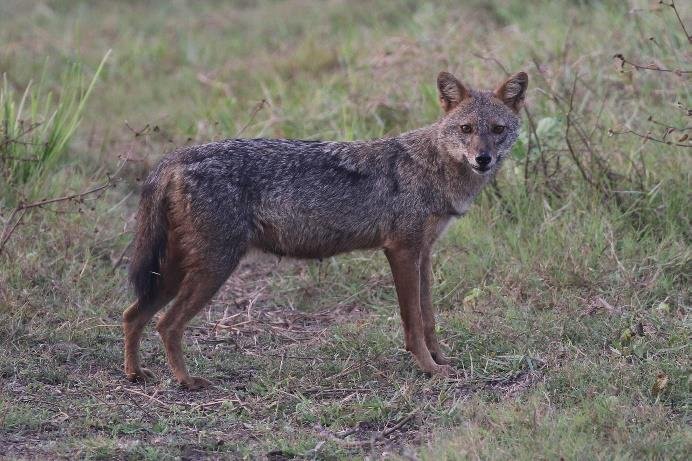
Day 1: Depart UK on an overnight flight for Colombo, Sri Lanka
Day 2: Morning/early afternoon arrival in Colombo. Transfer to Kanneliya. Late afternoon and evening spotlighting walks at Kanneliya
We should arrive at Colombo in the late morning or early afternoon and after checking in to our hotel, we will spend the afternoon and evening exploring the lowland rainforest around Kanneliya looking for both mammals and birds. There are an excellent range of species here and our first speciality mammals should include Purple-faced Langur (Leaf-Monkey).
Twenty of Sri Lanka's endemic birds have also been recorded at Kanneliya and those we could see include Sri Lanka Spurfowl, Sri Lanka Junglefowl, Red-faced Malkoha, Orange-Billed Babbler and the Sri Lanka Blue Magpie.
After dinner, we will set off on what will be the first of many after dark spotlighting sessions to look for the special mammals of Sri Lanka. Kanneliya is a good site for Red Slender Loris and Yellow-striped Chevrotain and we also have a chance of Golden Palm Civet.
Although at some locations during our trip we will be spotlighting from vehicles, here it is largely done on foot (from a wide jeep track), although we may need to go off the trail in the hope of better views of the loris.
Day 3:Morning Kanneliya Rainforest. Drive to Kataragama. Evening spotlighting along the Kataragama to Buttala road
We will spend the morning exploring more of Kanneliya's excellent rainforest habitats. During the heat of the day, we will drive to Kataragama which should take about three hours. We may arrive in time for some local exploring, but our main objective is an evening spotlighting session along the road between Kataragama to Buttala. This is predominantly an area of scrub, fields and paddies and both Fishing and Rusty-spotted Cats are possible. It can also be good for Asian Elephant, Small Indian Civet, Black-naped Hare and a variety of other mammals.
Day 4: Morning drive in Lunugamvehera National Park. Afternoon relaxing around hotel. Spotlighting session along the Kataragama to Buttala road or the Kataragama to Bundala road.
During the morning, we plan to visit Lunugamvehera National Park. This site is far less visited and consequently less disturbed than the much better known Yala National Park and is a good site for Sloth Bear and we have seen both that species and Leopard here previously. The area is also good for Asian Buffalo and Chital, with other possibilities including Toque Macaque, Tufted Grey Langur, Black-naped Hare, Sambar Deer, Spotted Deer, Stripe-necked Mongoose, Grey Mongoose, Ruddy Mongoose, Asian Elephant, Wild Boar and Golden Jackal.
There is also excellent birding at Lunugamvehera and we will hope to see Black-winged Kite, Painted Stork, Lesser Adjutant, Spot-billed Pelican, Black-headed Ibis, Greater Racket-tailed Drongo, Sri Lanka Green Pigeon, Sri Lanka Grey Hornbill, Malabar Pied Hornbill, White-bellied Sea-Eagle, Crested Serpent Eagle, Changeable Hawk Eagle, Stork-billed Kingfisher, Blue-faced Malkoha and Sirkeer Malkoha amongst a substantial list of possible species.
After dark, we will again head out to look for cats and will either explore the Kataragama to Buttala road or alternatively the road from Kataragama to Bundala depending on local knowledge and what we saw the previous evening. Many of our nocturnal excursions may last several hours (and potentially continue until the early hours of the morning), and our goal here is to locate both Fishing and Rusty-spotted Cats. On our recce for this holiday, a Fishing Cat was watched for 30 minutes on one drive and whilst there are no guarantees, this is one of the best areas for this species.
Day 5: Morning relaxing around hotel. Afternoon drive in Lunugamvehera National Park. Spotlighting session along the Kataragama to Buttala road or the Kataragama to Bundala road.
After a relaxing morning, in the afternoon we will continue our search for the species listed above and then as on the two previous evenings will offer a spotlighting session around the nearby scrub, fields and paddies.
Other possibilities could include Asian Elephant, Small Indian Civet and Black-naped Hare and a number of other mammals.
Day 6: Morning drive in Lunugamvehera National Park. Late morning/afternoon transfer to Nuwara Eliya.
We will have a final morning to conclude our exploration of Lunugamvehera National Park and our emphasis will be on looking for anything we may not have seen so far. In the late morning/early afternoon, we will depart for Nuwara Eliya, a journey that should take about four hours.
Day 7:Morning visit to Hakgala Botanical Gardens. Afternoon drive to Kandy. Evening spotlighting in grounds of hotel.
We will start the day with a morning visit to the Hakgala Botanical Gardens and whilst this is mainly a birding site, it is also the best place on the trip for the distinctive highland form of Purple-faced Langur. We intend to explore this site on foot but will only be walking short distances and mainly on tarmac.
Other mammal possibilities here include Toque Macaque, Indian Bush Rat and Giant Bandicoot Rat but there should also be plenty of birds to look for. One of the potentially highlights is the Sri Lankan endemic Chestnut-backed Owlet which we stand a decent chance of finding here.
Other birds which are possible include Black Eagle, Shikra, Indian Pitta, Dusky-blue Flycatcher, Grey-headed Canary Flycatcher, Kashmir Flycatcher, Orange-headed Ground Thrush, Sri Lanka Blue Magpie, Yellow-eared Bulbul and Sri Lanka White Eye.
We will continue on to Kandy where we plan to spend the evening spotlighting in the grounds of our hotel. This can be a good place to look for Small Indian Civet, Golden Palm Civet and Common Palm Civet, with other possibilities including Indian Gerbil, Giant and Lesser Bandicoot Rat, Indian Flying Fox and Toque Macaque. Brown Fish Owl also occurs here.
If we haven't yet seen Fishing Cat, there is a site not too far from the hotel where this species can sometimes be found.
Day 8:Morning drive to Sigiriya. Afternoon birding at Sigiriya. Long spotlighting session around Sigiriya
We will leave our hotel at Kandy after breakfast for the drive to Sigiriya which should take about three hours. We plan to spend the afternoon primarily looking for birds, although there are plenty of mammal possibilities including Wild Boar, Asian Elephant, Golden Jackal, Indian Palm Squirrel, Sri Lanka Giant Squirrel, Toque Macaque, Grey Langur, Purple-faced Leaf Monkey (lowland form), Leopard, Spotted Deer and Sambar. We may also find Mugger Crocodile, Indian Python, Asian Water Monitor and Land Monitor.
The birds could include Lesser Adjutant, Painted Stork, Spot-billed Pelican, Black-headed Ibis, Sri Lanka Junglefowl, Sri Lanka Hanging Parrot, Brown-capped Babbler, Sri Lanka Grey Hornbill, Black-crested Bulbul and Crimson-fronted Barbet.
After dinner, there will be another spotlighting session with this being another site where we could find Fishing, Rusty-spotted and Jungle Cats. Small Indian and Common Palm Civets, Indian Crested Porcupine, White-spotted Chevrotain and Grey Slender Loris are also likely along with many more widespread species. Nocturnal birds could include Brown Fish Owl and Indian Nightjar.
Day 9:Morning lie in. Afternoon jeep safari in Minneriya or Kaudulla National Park depending on the location of the Elephants. Long spotlighting session around Sigiriya.
We will have the opportunity for a morning lie in after our late-night spotlighting session but for those who are keen to explore, the grounds of our hotel offer excellent birding opportunities.
We will then offer an afternoon jeep safari to either Minneriya or Kaudulla National Park with the choice dependent on where we stand the best chance of Asian Elephant. Other possibilities this afternoon include several species of mongooses and the lowland form of Purple-faced Langur.
Once again, we will head out spotlighting after dinner.
Days 10:Morning lie in. Afternoon walk in Pidurangala forest /rock temple in looking for bats, Purple-faced Langurs, mongooses and squirrels. Long spotlighting session around Sigiriya.
After what is likely to have been another late-night spotlighting session, we will have a leisurely morning but in the afternoon we will visit the Pidurangala rock temple and the nearby forest. We hope to see a selection of roosting bats including Schneider’s Leaf-nosed Bat, Pygmy Pipistrelle and False Vampire Bat.
After dinner, we will have another spotlighting session by jeep around the Pidurangala forest and village.
Day 11:After breakfast drive to Wilpattu National Park for a full day.Evening spotlighting in buffer zone outside national park.
Wilpattu National Park is a relatively new destination for the WildWings tour but offers some of the best mammal watching anywhere in Sri Lanka. The list of possible species includes Leopard, Jungle, Fishing and Rusty-spotted Cats and Sloth Bear. We hope to have seen many of these species earlier in the tour but Wilpattu provides us with additional opportunities to find some of Sri Lanks’s most enigmatic and sought-after mammals.
A unique feature of Wilpattu is the existence of natural, sand-rimmed water basins or depressions that fill with rainwater. There are almost 60 lakes (Willu) and tanks spread throughout Wilpattu. Wilpattu consists of a range of habitats including tall monsoon forest and this mix of habitats supports a wide range of species but the main focus of our time here will be Sri Lankan Leopard. The park remained closed for many years and as a consequence of the reduction in human activity within the park, populations of Sambar Deer, Spotted Deer and Wild Boar have increased and helped sustain a good population of Leopards.
Another target here will be Sloth Bear which is frequently seen in the early morning and late evening. They mate throughout the year and it is not unusual to encounter a female with cubs on a rocky outcrop or at a water hole. Other mammals likely to be seen here include Asian Elephants, Ruddy Mongoose, Indian Red Muntjac, Tufted Grey Langur, Toque Macaque and Golden Jackal.
Birds likely to be encountered include Sri Lanka Grey Hornbill, Sri Lanka Green Pigeon, Brown Fish Owl, Sri Lanka Frogmouth, Brown-capped Babbler and White-rumped Shama. Marsh Mugger crocodiles are regularly seen and we may also be able to find monitor lizards, Indian Cobra and Indian Rock Python.
Day 12: Morning jeep safari in Wilpattu National Park, afternoon at leisure around hotel. Evening spotlighting in buffer zone outside national park.
We will spend the morning continuing our exploration of Wilpattu National Park and then have a relaxing afternoon before another spotlighting session after dark.
Day 13:Morning jeep safari in Wilpattu National Park. Drive to Katunayake.
We will have a final morning visit at Wilpattu before leaving for Katunayake for our final night in Sri Lanka.
Day 14: Morning flight back to the UK arriving back early evening.
EXTENSION
Day 13: Morning jeep safari in Wilpattu National Park. Drive to Kalpitiya
We will have a morning visit at Wilpattu before leaving for Kalpitiya.
Day 14: Morning boat trip to look for cetaceans
We have a private morning boat trip to look for cetaceans with the possibilities including Blue, Sperm and Minke Whales, Short-finned Pilot Whale, Spinner Dolphin and Bottlenose Dolphin.
During the afternoon, there will be the option for local birding or visit a nearby historical site.
Day 15: Morning boat trip to look for cetaceans. Drive to Katunayake.
There will be a second boat trip to look for cetaceans and we plan to concentrate on looking for species we may not have seen the previous day.
After lunch we will drive back to Katunayake for a flight in the early hours of Day 16 arriving at London Heathrow the same day.
For more details about the extension please contact the WildWings office.
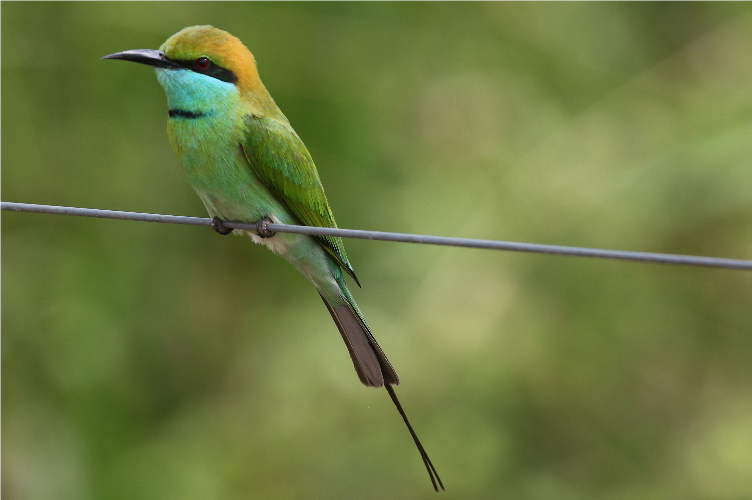
WHAT TO EXPECT
All the hotels and lodges are good quality and close to our mammal watching locations.
Meals will generally be a combination of Sri Lankan, Indian and Continental dishes, often incorporating local foods. Some choice is usually available and most special dietary requirements (for example vegetarian/vegan options) can be accommodated. If you do have any special requirements we recommend you inform us in advance of the tour in order that we may make any necessary arrangements.
In many of the hotels there is also either a snack or an a la carte menu and you may be able to select from these if there is nothing on the main menu that you want to eat although there may be a small additional charge for some options. If you have a food allergy that prevents you from eating certain foods we also suggest you carry some snacks with you.
TRANSPORT
All road transport will be in a comfortable, air-conditioned minibus. Road conditions are generally very good although progress can be slow around the main cities and in the hill country. 4x4 jeeps will be used for safari drives and night drives.
Watching from jeeps is not always ideal or easy for group members and guides alike. We, therefore, ask your cooperation in rotating places in jeep(s) for safari drives on the request of your tour leader or local guide.
WEATHER
The weather conditions throughout this tour will be more or less stable throughout, with warm to hot (20-30C) temperatures by day with cool to cold nights and early mornings (10-20C). March is at the end of the dry season so we should hopefully have dry conditions throughout the tour.
MONEY
The currency of Sri Lanka is the Rupee. It is not usually possible to exchange a foreign currency into Rupees abroad, however, you will be able to buy them on arrival in Colombo. When exchanging money, particularly inside the airport, please briefly check the notes you are given and do not accept any bundle containing an excessive number of notes that are torn, old, or generally in very poor condition, since they may not be accepted elsewhere. The exchange rate in February 2023 was 450 rupees per £1.
Not all tips are included in the price of the tour and are at your discretion. 100 rupee notes are particularly handy for tipping porters, room service etc.
We would suggest taking a minimum of £200 spending money. If you are planning to use credit or debit cards in Sri Lanka please remember to notify your card provider in advance to avoid potential problems.
CLOTHING AND OTHER EQUIPMENT
- Sri Lanka is likely to be hot so lightweight clothing is recommended. A good sun block and hat are essential. Temperatures can however be quite cold in the mornings particularly on Horton Plains and on the back of open jeeps so please bring some warmer clothing including a fleece and/or windproof jacket with you. These will also be useful if we experience cold conditions at night when spotlighting. Long-sleeved shirts are useful for protection against the sun/insects.
- Sober coloured clothing and backpacks, greens, browns etc is preferable, conspicuous colours such as white, red and yellow should be avoided.
- Please bring torches as we will be spending time in the field at night.
- A pair of sturdy walking shoes would be useful at Horton Plains. Lightweight shoes may be useful in hotels and on jeep safaris.
- Good binoculars with a specification of at least 8x30 are essential and if you have them a telescope and tripod or monopod could be useful in some areas.
- Sunglasses and spare glasses or contact lenses if applicable.
- Sun block and insect repellent.
- Snacks.
Photographic opportunities should be excellent and we would expect us to get very close views of a number of species. Video rather than still photography may be better when looking for primates in the forest especially if the video has a videograb facility. Video is generally better in forest as it can operate in much lower light conditions, although many modern cameras now have much improved picture quality at higher ISO levels.
ELECTRICITY AND WI-FI
The standard voltage is 230 V and the standard frequency is 50 Hz. Most hotels we will be staying in have at least one UK-style 3-pinned socket in the room, however, we also recommend taking a converter with you as most rooms also have several sockets that use three round pin plugs. See https://www.power-plugs-sockets.com/gb/sri-lanka/ for further information.
Most of the hotels have free wi-fi in the rooms although in one or two reception is poor and it is easier to access wi-fi in the reception area and/or restaurant.
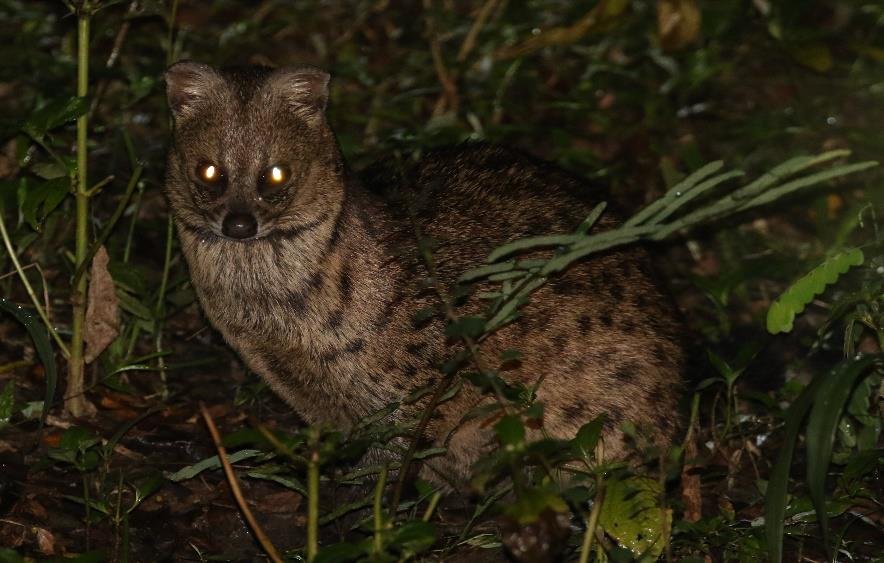
Tour Gallery
View a gallery of images for this tour below, click on an image to view as full size with caption
